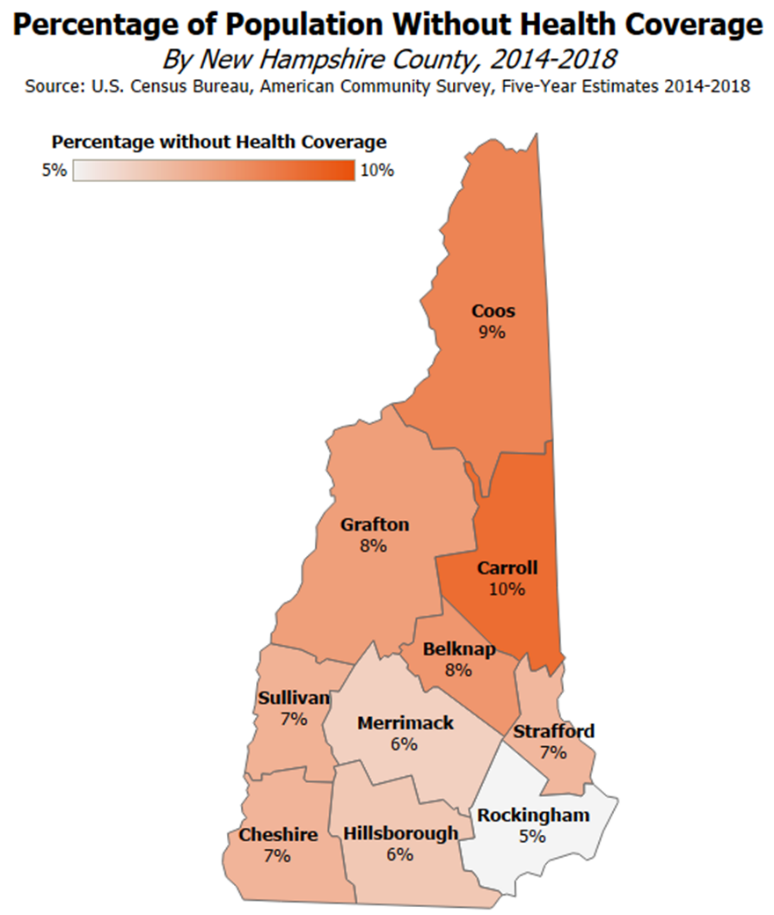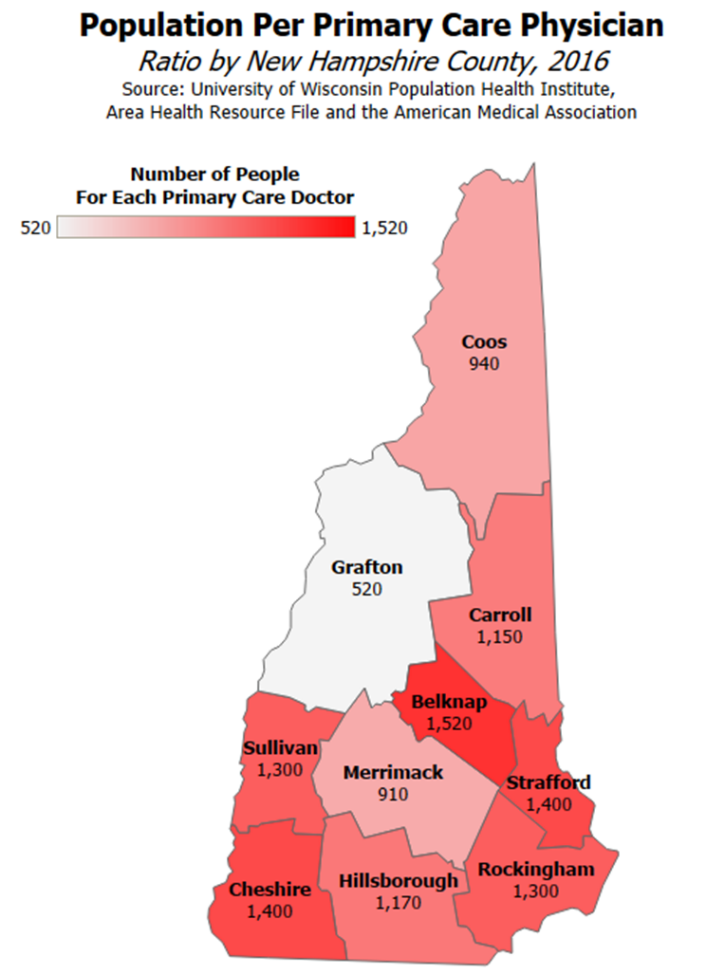With the potential for an increased need for health services in the coming weeks as the 2019 novel coronavirus spreads, Granite Staters face uneven access to health care. Successful access to health services typically requires access to both health providers and coverage, and often the ability to pay expenses out-of-pocket. Approximately 77,000 New Hampshire residents, or about one in twenty, lacked health coverage in 2018, and the number of residents per primary care physician varied considerably across different regions of the state.
The percentage of people with health coverage varies considerably by geography. While the U.S. Census Bureau provides data that permits annual assessments of health coverage at a statewide level, county-level coverage must be measured over a longer period. In the 2014-2018 time period, about five percent of all residents in Rockingham County lacked coverage, while about 9 percent in Coos County and 10 percent in Carroll County lacked coverage. Public coverage, primarily Medicare and Medicaid, plays a significant role in covering those not insured privately, with approximately 32 percent covered by public programs statewide in 2018. About one in five children in Rockingham County, and three in five children in Coos County, are covered by Medicaid.
Health coverage is key for accessing services, especially for those with low incomes and limited assets. While the U.S. Centers for Disease Control has agreed to provide testing for the 2019 novel coronavirus, which causes the disease COVID-19, regardless of whether an individual has health insurance or not, health coverage may be critical for effectively treating illness.
Treatment, and referral for specialized treatment, may also be more difficult to access in some parts of the state than others. The number of primary care physicians per resident varies across counties in the state. Typically, this disparity in access may contribute to longer wait times for appointments or transportation challenges, but individuals may also commonly cross county lines to receive treatment. But additional travel brings greater risk for both contracting and spreading this coronavirus.
Disparity in access to health services is not the only risk that the 2019 novel coronavirus exacerbates. Individuals who seek to limit exposure to themselves or others may limit social contact, but their abilities to work from home may be curtailed by uneven access to high speed internet or cellular service around the state. Others may not have jobs, such as in retail, accommodation or food services, and certain health or manufacturing positions, that permit feasibly working from home; many of these workers may face reduced incomes, as their workplaces may not offer paid sick leave. Finally, children may not be able to access free meals provided at schools, risking higher levels of food insecurity. The New Hampshire Department of Education is seeking additional authority to support free and reduced-price meals, which serve about one out of every four students statewide, even if schools are closed.
As the COVID-19 crisis escalates, the broader economic impacts will likely affect residents to different extents and may fall particularly hard on low-income and hourly workers who were already struggling to make ends meet.
– Phil Sletten, Policy Analyst


